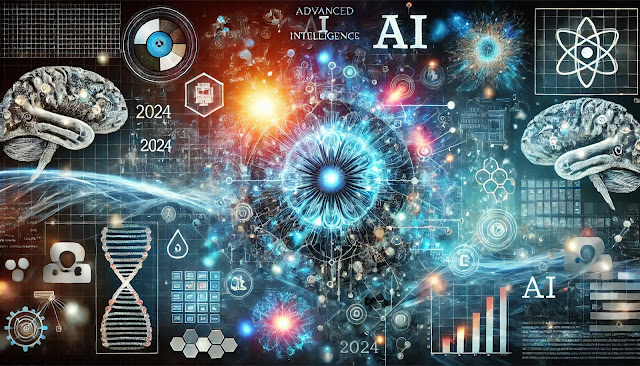GCP AI Fundamentals - AIML Series 9 - Recommendation Systems
Welcome to AIML Series 9, where we delve into the fascinating world of recommendation systems. In this detailed guide, we will explore the different types of recommendation systems, how they work, and their applications. From content-based to collaborative systems, and from neural networks to reinforcement learning, you'll gain a comprehensive understanding of the mechanisms behind some of the most effective AI-driven tools. Let's get started!
1. Types of Recommendation Systems
Overview: Recommendation systems are designed to suggest products, services, or content to users based on various data inputs. They play a crucial role in personalizing user experiences. Let's break down the primary types:
Content-Based Systems:
- Definition: Focus on the attributes of items and recommend items similar to those the user has liked before.
- How It Works: Uses item features (e.g., genre, actors, director for movies) to recommend similar items.
- Example: A movie recommendation system suggesting films with the same genre and actors as previously watched ones.
Collaborative Filtering:
- Definition: Leverages user behavior and preferences to recommend items.
- Types:
- User-User Collaborative Filtering: Finds users with similar tastes and recommends items they liked.
- Item-Item Collaborative Filtering: Finds items that are similar based on user ratings.
- Example: Amazon’s recommendation system suggesting products based on what similar users have purchased.
Pitfalls:
- Cold Start Problem: Difficulty in recommending items to new users or when new items are added.
- Scalability: Challenges in handling large datasets and real-time recommendations.
- Sparsity: Difficulty in making recommendations with limited data, especially in new or niche categories.
2. Content-Based Recommendation Systems
Similarity Measures:
- Cosine Similarity: Measures the cosine of the angle between two vectors, useful for measuring text similarity.
- Euclidean Distance: Calculates the straight-line distance between two points in vector space, often used for numerical data.
- Jaccard Similarity: Measures similarity between finite sample sets, useful for binary attributes.
Building a User Vector:
- Data Collection: Aggregate user preferences into a vector based on past interactions (e.g., items rated, viewed, or purchased).
- Vector Construction: Create a vector that represents the user’s preferences, using features of the items they interacted with.
Making Recommendations:
- Comparison: Compare user vectors with item vectors to find the most similar items.
- Scoring: Recommend items with the highest similarity scores to the user.
Using Multiple Vectors:
- Integration: Combine different types of user data (e.g., browsing history, purchase history) into multiple vectors.
- Comprehensive Profiling: Create a comprehensive user profile for more accurate recommendations.
Neural Networks for Content-Based Recommendations:
- Deep Learning: Utilize neural networks to capture complex patterns in data.
- Application: For instance, CNNs (Convolutional Neural Networks) can analyze image content to provide recommendations based on visual similarities.
3. Neural Networks Recommendation Systems
Hybrid Systems:
- Combination: Merge content-based and collaborative filtering approaches.
- Example: Netflix uses a hybrid approach combining user ratings with content analysis to suggest shows and movies.
Context-Aware Systems:
- Definition: Take into account the context in which recommendations are made (e.g., time of day, location).
- Benefit: Enhance relevance and personalization by considering the user's current situation.
Contextual Post-Filtering:
- Adjustment: Refine recommendations based on contextual information after the initial filtering process.
- Outcome: Improve user satisfaction by tailoring recommendations to situational factors.
Modeling with Context-Aware Algorithms:
- Algorithms: Use advanced machine learning algorithms like LSTM (Long Short-Term Memory) networks to incorporate context into recommendations.
- Example: Sequential recommendation tasks where the order of interactions matters (e.g., music playlist generation).
4. YouTube Recommendation Systems Case Study
Overview: YouTube's recommendation system is a sophisticated example of AI at work. Here's how it operates:
Candidate Generation:
- Broad Identification: Identify a wide range of potential videos for recommendation using collaborative filtering and other techniques.
- Diverse Pool: Ensure a diverse pool of candidate videos to cater to varied user interests.
Ranking:
- Evaluation: Rank the candidate videos by evaluating numerous factors such as user engagement, watch history, and video attributes.
- Algorithm: Use machine learning models to score and rank videos to optimize for watch time and user satisfaction.
5. Reinforcement Learning in Recommendation Systems
Introduction: Reinforcement learning (RL) is increasingly being applied to recommendation systems. Here's an overview of its application:
Framework and Workflow:
- Value-Based Methods: Use Q-learning to estimate the value of actions to maximize cumulative reward.
- Policy-Based Methods: Directly optimize the policy that decides actions to improve decision-making.
- Contextual Benefits: Adapt recommendations dynamically based on the changing context and user interactions.
- Model-Based vs. Model-Free:
- Model-Based: Predict future states to make decisions.
- Model-Free: Learn policies directly from interactions without predicting future states.
Practical Applications:
- Example: Real-time personalization in online retail environments.
- Benefits: Increased user engagement, better customer satisfaction, and more effective personalization strategies.
Conclusion
In this comprehensive guide, we've covered the fundamentals of recommendation systems, explored various types, and delved into advanced techniques involving neural networks and reinforcement learning. With real-world examples like YouTube's recommendation engine, you can see the practical applications of these powerful AI tools. Whether you're looking to build your own recommendation system or simply understand the technology behind the scenes, this guide provides a solid foundation.

.%20The%20image%20features%20a%20network%20of%20in.webp)



Comments